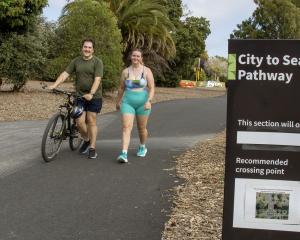
The Blenheim friends, aged 21 and 17, were last seen stepping off a water taxi onto a stranger's yacht in the Marlborough Sounds in the early hours of January 1, 1998, following a New Year's Eve party at Furneaux Lodge.
Their bodies have never been found.
Watson - one of about 300 people at the party - was identified early on by police as "a witness" and his boat was seized. However, he was not arrested for six months, by which time his name, previous convictions and reputation had become well-known to the public.
He was convicted of the murders in 1999 after an 11-week trial involving about 500 witnesses.
The young friends had planned to sleep on the chartered yacht Tamarack but arrived to find the berths full.
A man travelling alone on Guy Wallace's water taxi offered them a place to sleep on his yacht instead, and Wallace dropped the trio off about 4am.
Wallace, who died in 2021, initially described the yacht as a wooden ketch with two masts - totally different to Watson's steel-hulled sloop, Blade.
He also gave evidence that Watson was the mystery man on his water taxi, but later recanted that testimony.

The "blink photo", as it became known, showed Watson with his eyes half-closed.
Wallace later said police pressured him, and also admitted he may have been confused over the location of the yacht.
Bar manager Ros McNeilly also identified Watson from a photo montage - but changed her mind after she saw a photograph of Watson on the night of the party.
An inquiry by the Independent Police Conduct Authority in 2010 found the use of the photo montage was "problematic" and fell short of best practice.
Two prison informants gave evidence at the trial that Watson had confessed to them. However, one later said he had lied under pressure, and it was revealed the other man had never shared a cell with Watson.
Watson has been denied parole four times since he became eligible eight years ago - partly because he has refused to admit his guilt.
This week's hearing - which is set down for five days - comes four years after the case was referred back to the Court of Appeal, following a second application for a royal pardon in 2017.
It will focus on the use of the photo montages shown to witnesses ahead of the original trial, and the reliability of forensic testing used to show two hairs found on Watson's boat belonged to Olivia Hope.
The blonde hairs were found on a second search of Watson's boat, two weeks after a first sweep and - crucially - after the girl's hairbrush had been taken to the lab to compare samples.
An unexplained slit in the bag in which the hair from the boat was kept has given rise to suspicions the samples may have been contaminated.
As the bodies were never found, the original case relied on a raft of circumstantial evidence, including that Watson had previously talked about killing women and had given a confused account of his movements on New Year's Day.
He had also cleaned the interior of his yacht and painted it, although the defence pointed out that he had bought the paint weeks earlier.
Bunk squabs had pieces cut out of them, the Blade's anchor chain was missing a length and none of the clothes Watson was wearing at Furneaux Lodge have ever been found.
Several books, documentaries and podcasts over the years have criticised aspects of the prosecution case.
Based on timings and descriptions in witness statements, along with the known locations of other boats, Auckland yachtie Mike Kalaugher and navigator Barry Kirkwood floated the theory that Blade could not have been in the same location as the mystery ketch.
Keith Hunter's 2003 television documentary Murder on the Blade? and 2005 book Trial by Trickery claimed Wallace was confused about the location of the boat - and the timing of the water taxi drop-off.
Timeline
- 1999: Scott Watson was convicted of the murders of Ben Smart and Olivia Hope
- 2000: The Court of Appeal declined to recommend a second trial
- 2003: The Privy Council declined to hear the case, saying there were no grounds for further appeal
- 2009: Watson petitioned the Governor General for a Royal Prerogative of Mercy pardon (on the basis Ros McNeilly and Guy Wallace no longer believed they had identified the right person)
- 2013: Then-Justice Minister Judith Collins advises Governor-General Sir Jerry Mateparae that Watson's application for a royal pardon should be declined on the basis of a report by Kristy McDonald QC, which found there was no "fresh evidence" to consider
- 2015: Watson was denied parole for the first time
- 2017: A second application for a Royal Pardon was made (by convicted murderer Brian McDonald), centring on the reliability of evidence of the two blonde hairs found on Watson's boat, Blade. That application was declined
- 2020: Then-Justice Minister Andrew LIttle announced Governor-General Dame Patsy Reddy had referred Watson's case back to the Court of Appeal.














